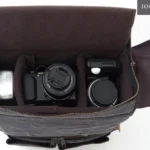Choosing the right boat propeller is essential. It impacts your boat’s performance and lifespan. But how do you select the best propeller?
The right choice ensures smoother sailing. A wrong pick might ruin your boating experience. Factors like size, material, and pitch matter.
Have you ever wondered how a new boat propeller can make a difference? It’s crucial to understand your boat’s needs. In this blog, we’ll explore the must-consider factors.
You’ll gain insight into making an informed decision. Ready to enhance your boating adventures? Let’s dive into the details of picking a new boat propeller.
Understanding Propeller Basics
Let’s review some basics. A boat propeller is a rotating fan-like device that helps move your boat through water. It consists of two or more blades connected to a center hub.
When the engine turns, it rotates the propeller blades, creating thrust to move the boat forward. There are various types and styles of boat propellers available on the market, each designed for specific purposes and boats. The four main types include:
Fixed-Pitch Propellers
Fixed-pitch propellers are common and straightforward. They have blades set at one angle or pitch, that can’t be changed or adjusted.
Fixed-pitch propellers are durable. It requires less maintenance since there are no moving parts to adjust.
They perform well in general boating conditions and are best suited for boats with consistent operating speeds. These propellers are also more affordable compared to variable-pitch propellers.
Yet, because their pitch can’t be adjusted, they might not be as efficient if you frequently encounter varying loads or speed needs. They provide reliable and stable performance for many boating activities.
Controllable-Pitch Propellers
Controllable-pitch propellers (CPP) offer flexibility by allowing the angle or pitch of the blades to be adjusted. This can be done while the boat is in motion. It gives you the ability to adapt to different speeds and load conditions.
CPPs are beneficial for boats that need to optimize performance for various situations, such as fishing boats or vessels that encounter varied water conditions. They tend to be more complex and need more maintenance due to the moving parts involved. Yet, the ability to adjust the pitch can lead to improved fuel efficiency and better performance.
Adjustable-Pitch Propellers
Adjustable-pitch propellers allow you to change the pitch of the blades. The adjustment is typically made when the boat is not in use. This type of propeller gives you the advantage of fine-tuning your boat’s performance for different activities, whether it’s cruising, towing, or racing.
Adjustable-pitch propellers are user-friendly and do not need as much maintenance as controllable-pitch propellers. They offer greater flexibility than fixed-pitch propellers. It makes them a good choice for boaters who want to optimize their boat’s efficiency for specific conditions or loads.
Ducted Propellers
Ducted propellers, also known as shrouded or Kort nozzles, feature a propeller encased in a cylindrical duct. This design enhances thrust efficiency, particularly at lower speeds.
The duct reduces water turbulence and directs the flow more efficiently over the blades. Ducted propellers are particularly useful for heavy-duty applications. It includes tugboats or vessels that need significant maneuvering capabilities.
They also offer protection to the propeller blades from debris or underwater obstacles. While they can be more expensive and complex, their efficiency and durability make them a valuable choice for specific boating needs.
Factors to Consider
Let’s dive into the factors you should consider when selecting a new one for your boat. Keep in mind that no single factor is more important than the others. They are all interconnected and need to be considered together.
Boat Size and Weight
Your boat’s size and weight are crucial in determining the most suitable propeller. A larger and heavier boat requires a propeller with more thrust to move efficiently through the water.
If your boat is bigger, you will need a propeller with a larger diameter and more blades. This setup helps generate the necessary power for movement.
Smaller boats can use propellers with fewer blades and a smaller diameter. The weight of your boat also affects its balance and handling.
Heavier boats need propellers that can handle more load without sacrificing performance. In general, matching your propeller to your boat’s size and weight ensures optimal performance. It also increases the longevity of both the propeller and the boat’s engine.
Always refer to the manufacturer’s guidelines. Consult a professional when selecting a propeller based on your boat’s dimensions and load capacity.
Material
The material of your boat propeller plays a significant role in its performance and durability. Propellers are commonly made from three materials: aluminum, stainless steel, and composite. Each material has its advantages and drawbacks that can impact your boating experience.
Aluminum propellers are lightweight, affordable, and suitable for most casual boating activities. They are less expensive than their stainless steel counterparts.
They offer a good performance-to-cost ratio. Yet, aluminum propellers are more susceptible to damage from impact with underwater obstacles.
Stainless steel propellers are more durable and offer better performance due to their rigidity. They are an excellent choice for high-performance boating and for handling challenging conditions.
The higher strength of stainless steel allows for thinner blades. It can improve efficiency. Yet, they are pricier and heavier than aluminum propellers.
Composite propellers are made from plastic or fiberglass materials. They are resistant to corrosion and are a cost-effective option for smaller boats.
While they may not offer the same level of performance as aluminum or stainless steel. They are lightweight and easy to repair.
When selecting a propeller, consider how the propeller pitch will interact with the material. The right combination ensures optimal performance, fuel efficiency, and longevity.
Pitch
Propeller pitch refers to the distance that the propeller would move in one complete revolution, assuming there is no slippage. It is measured in inches.
Imagine the propeller is a screw moving through a solid material. The pitch tells you how far forward the boat would travel with each rotation of the propeller.
The pitch of the propeller is crucial because it directly affects the boat’s speed and engine performance. A lower-pitch propeller allows for faster acceleration but reduces top-end speed.
A higher-pitch propeller increases top speed but can make getting on a plane more difficult. Matching the appropriate propeller pitch to your boat’s engine and intended use ensures efficient operation.
It also prevents undue strain on the motor. Always consult your boat’s manual and consider your boating activities when selecting the right pitch.
Number of Blades
The number of propeller blades impacts your boat’s performance and efficiency. Most boat propellers have three to five blades, with each configuration offering its own set of benefits and drawbacks.
Three-blade propellers are the most common, providing a balance of speed and efficiency. They offer less drag, making them ideal for achieving higher speeds and better fuel economy. Yet, they may produce more noise and vibrations at higher speeds.
Four-blade propellers provide better acceleration and handling, especially in rough waters. They offer increased thrust and smoother performance but can slightly reduce top-end speed.
For heavy or larger boats, five-blade propellers provide the greatest power and smoothness. It is vital for towing and heavy loads.
Choosing the right number of propeller blades depends on your boating needs. Whether it’s speed, handling, or carrying capacity, the blade count matters.
Water Conditions
Water conditions play a crucial role in selecting the right boat propeller. The type of water you’ll be navigating can significantly impact propeller performance.
Whether calm lakes, choppy coastal waters, or fast-moving rivers, each environment presents unique challenges. Understanding these conditions is crucial for optimal performance.
In calm waters, a standard propeller can work efficiently. It provides smooth and stable movement. Yet, in choppy or rough waters, a propeller with more blades or a specialized design might be necessary to maintain stability and performance.
Water depth is an essential consideration. Shallow waters could present risks of propeller damage from underwater obstacles or debris.
In such cases, a propeller designed to cut impact damage, such as one made from more durable materials like stainless steel, may be ideal. Always consider the typical water conditions you encounter. It is to ensure your boat propeller offers the best performance and longevity.
Cost
Cost is a significant factor when selecting a boat propeller. Prices vary based on material, size, and brand. Aluminum propellers are generally the most affordable.
They provide a cost-effective solution for casual boating needs. Stainless steel propellers are more expensive but offer greater durability. They also improve performance and have a longer lifespan.
Composite propellers fall in the mid-range cost. They are cheap and suitable for smaller boats. Always consider your budget when searching for a boat propeller for sale.
It’s important to balance cost and quality. Spending more upfront can save money long-term. Higher-end propellers may reduce fuel consumption and maintenance expenses.
Check for deals and discounts to find the best price. Investing wisely in your propeller ensures efficient boating performance.
Learn the Factors to Consider When Choosing a New Boat Propeller
Selecting the right propeller enhances your boating experience. Consider the boat size, material, and pitch carefully. A new boat propeller offers better performance and efficiency.
Also, match the number of blades to your needs. Understand the water conditions where you boat often. Don’t forget to balance cost with quality.
The right choice ensures smoother and safer sailing. Make the best decision for lasting boating adventures. Follow these guidelines and enjoy your time on the water.
Did you find this article helpful? If so, check out the rest of our site for more informative content.






